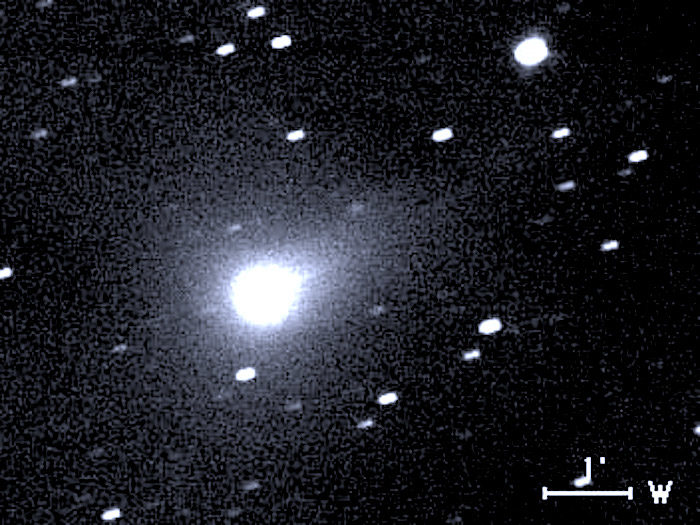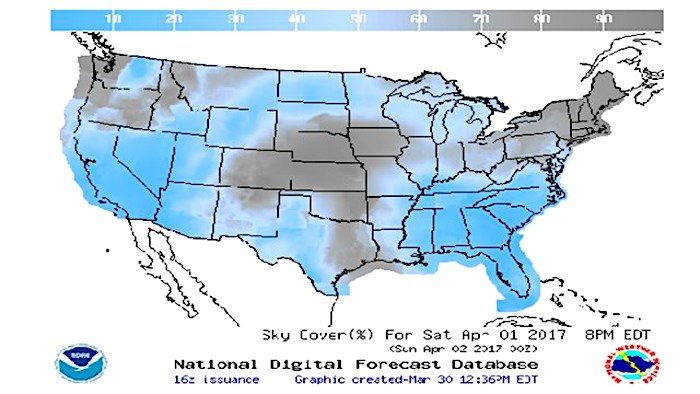
There's no need to worry about it hitting Earth: The comet will zoom past at a safe distance of around 13.2 million miles, about 50 times the moon's distance, EarthSky.org reports.
While the comet will be closest Saturday, you can get a peek in the days before and after. "Amateur astronomers with small telescopes are already watching, and more people will see the comet in the coming days," EarthSky.org said.
41P/Tuttle-Giacobini-Kresák will be in the far northern sky, meaning stargazers in the Northern Hemisphere can see it for much of the night. At 9 p.m. ET Saturday, for example, it should be near the handle of the Big Dipper, which is part of the Ursa Major constellation.
Clouds may obscure the sight for much of the Northeast, the central Plains and Pacific Northwest on Saturday night, but much of the rest of the country should be clear, the National Weather Service predicts.
The comet is not particularly large — less than a mile in diameter — and can't be seen with the naked eye, reports Science Alert. "Usually it appears in the night sky as a diffuse blob of light," the site said. "Good binoculars or small telescopes will be needed to pick it out, as well as a dark, clear, moonless night." Fortunately, the thin crescent moon won't hinder skywatchers as it will sink in the western sky after sunset Saturday, NASA said.
If you can't see the comet, you might want to travel over to astronomy website Slooh.com, which will be tracking the comet live via its telescopes in the Canary Islands.
Comets are named for their discoverers. This one carries all three names of the astronomers who separately found it in 1858, 1907 and 1951, EarthSky said. In 1951, with its third "discovery," astronomers finally realized the three comets of 1858, 1907 and 1951 were all the same.
This comet "belongs to a group of comets know as 'Jupiter comets'," according to Slooh.com. "These are comets that have been captured by the gravity of Jupiter, forcing them in an orbit that takes them between the sun and the gas giant," Slooh.com said.
41P/Tuttle-Giacobini-Kresák swings by the Earth every 5 and a half years.




Comment: Field Trip: Check it out!